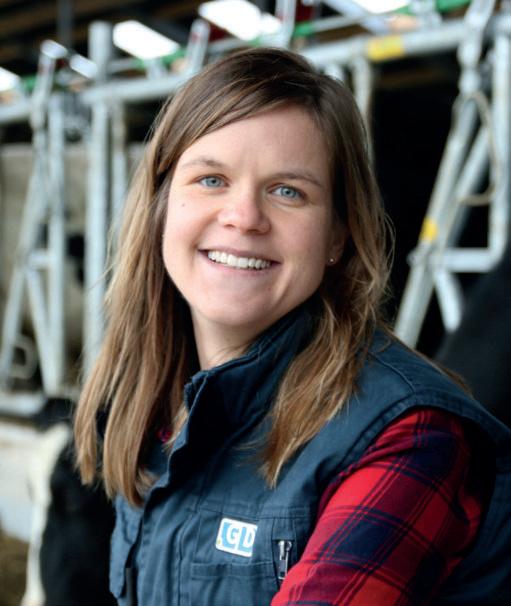






Sabine H.W. Tijs, Betsie Krattley, Hans J.D.H.M. Miltenburg, Annet E. Heuvelink, Manon M.C. Holstege and Theo J.G.M. Lam Royal GD, Deventer, the Netherlands
Introduction
Since 2008 Dutch dairy farmers have the opportunity to participate in a bulk tank milk (BTM) culture program. BTM culture can be used to evaluate hygiene practices and monitor the prevalence of mastitis-causing pathogens at dairy farm level. This study presents results of the Dutch BTM culture program over the period 2018 to 2023, with a focus on S. aureus, S. agalactiae, S. uberis, and Klebsiella spp.
Materials and Methods
• Sample frequency Dutch BTM culture program: either 6 or 10 times a year.
• Seven (groups of) target bacteria:
- Streptococcus agalactiae (presence/absence)
- Klebsiella spp. (presence/absence)
- Staphylococcus aureus (CFU/mL)
- Streptococci and streptococci-like organisms (CFU/mL)
- Coliform bacteria (CFU/mL)
- Streptococcus uberis (high numbers of CFU/mL, yes/no)
- Streptococcus dysgalactiae (high numbers of CFU/mL, yes/no)
• N = 2,476 participating farmers (2,351–2,624) per year, on average.
• N = 116,914 BTM samples analysed over the period 2018 to 2023.
Results
Staphylococcus aureus
• Between farms numbers of CFU/mL varied considerably.
Environmental pathogens: Klebsiella spp. and S. uberis
• Increasing number of BTM samples positive for S. uberis and Klebsiella spp.
• Prevalence of Klebsiella spp. peaked in summer and autumn.
Streptococcus agalactiae
• Positive BTM samples doubled in the period from 2018 to 2022.
• On many farms where S. agalactiae was found, its presence in BTM was intermittent.
• In 2023 a Brilliance GBS agar was added to the initially used modified Edward’s medium which;
o increased the number of S. agalactiae positive BTM samples.
o decreased the number of S. agalactiae intermittent herds.
1. Percentages of Bulk Tank Milk samples positive for Klebsiella spp. during the year 2023.
Table 1. Percentages of Bulk Tank Milk samples positive per pathogen in the Netherlands in the period from 2018 to 2023.
Klebsiella spp. (≥
Streptococcus dysgalactiae (≥ 1000 CFU/mL)
Streptococcus agalactiae (≥ 10 CFU/mL) 0.8%
Take home points
• Regular BTM testing is a practical method to monitor udder health pathogens at dairy farm level and to monitor hygiene practices.
• Environmental bacteria in BTM show an increasing trend over the years.
• The increasing number of S. agalactiae positive herds asks for further attention.
• Extended studies in factors associated with mastitis pathogens at farm level are recommended.


www.gdanimalhealth.com s.tijs@gdanimalhealth.com